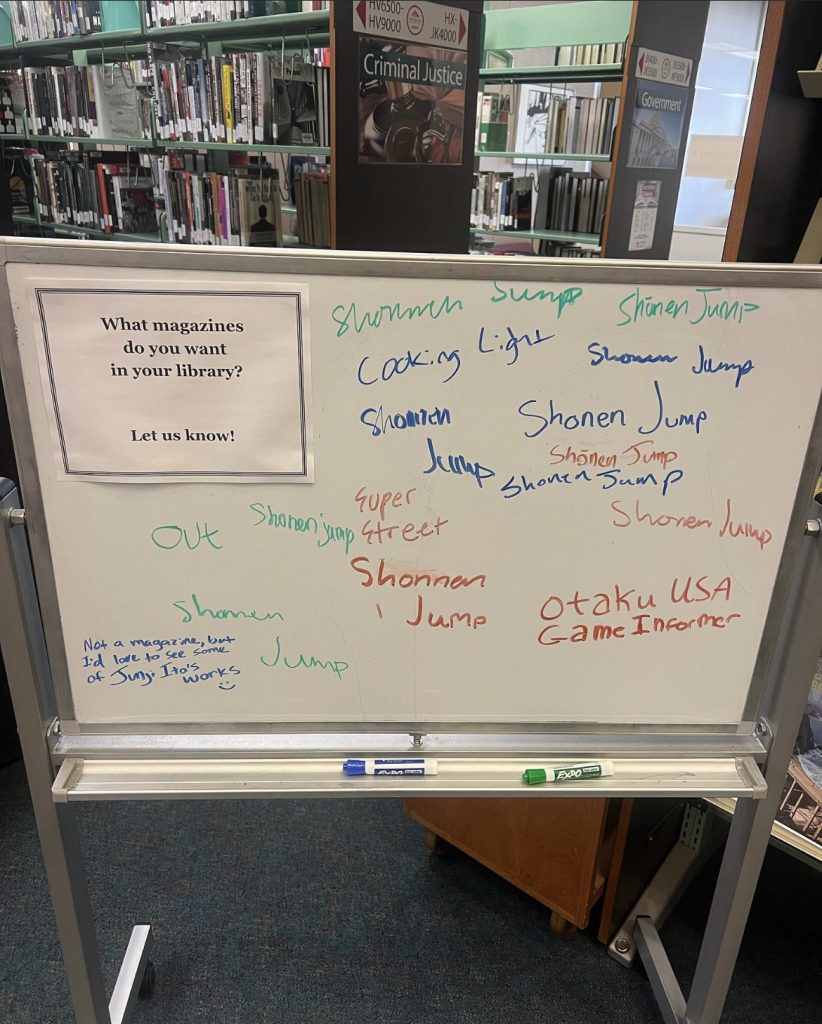Librarians seek book recommendations
Students demand 'Shonen Jump'

I was recently doing some last-minute work on an assignment in the Mt. Hood Community College Library, when I saw a whiteboard where students were asked what magazines they would like to see available. The suggestions gathered were “Cooking Light,” “Super Street,” “Otaku USA,” “Game Informer,” and 11 separate votes for “Shonen Jump.”
I had about an hour to finish a PowerPoint covering 10 weeks of Earth Systems and The Rock Cycle, but I could spend 20 minutes or so reading “Naruto.” I needed a break, anyway. In the time I was supposed to be building my presentation, I found out some interesting stuff about manga.
For one, Shonen Jump stopped printing physical media nearly 20 years ago, although it is still available on several apps and services. The main advantage of reading it online is convenience; you can read at home, on your phone, or on any other device. On the downside, some of these sites, such as Crunchyroll, charge an extra fee for their services. A subscription to Shonen Jump is available, which will give you access to every new issue as it comes out. This also includes access on the official website and on any other devices that have an app. The most popular way to read manga these days is online via a dedicated application or website. You can find many different sites where people upload their own scans of manga, and “scanlation” groups get together to translate the content into English. If you want to read Shonen Jump, there are a few options available. Viz Media offers an app for its manga readers or you can also download the Shonen Jump+ app from the Apple Store or Google Play. This is a free app that provides access to all of the content available on Shonen Jump’s website. Another app, Manga+, will allow a one-time reading of any Shonen Jump property from the beginning, including all 1,073 chapters on “One Piece.”
The MHCC Library, you should know, can help find elusive media using Summit and ILL. Summit gathers resources from 37 local libraries while Interlibrary Loan (ILL) requests can find media from farther away. I spoke with Toma Bumpbell, public services assistant for the library, who helped me find a few listed copies of “Jojo’s Bizarre Adventure” through the Summit system. On my own, I was able to find several listings for physical copies of Naruto manga volumes, DVD copies of “Naruto: Shippuden” and “Naruto: Legend of the Stone of Gelel,” as well as a few peer-reviewed articles on the differences between Dragonball and Naruto.
This was great to discover. Even more important, Bumpbell told me the real secret to finding media for Mt. Hood students or community members, whether it be for entertainment or research, is usually just asking a librarian.

Leave a comment